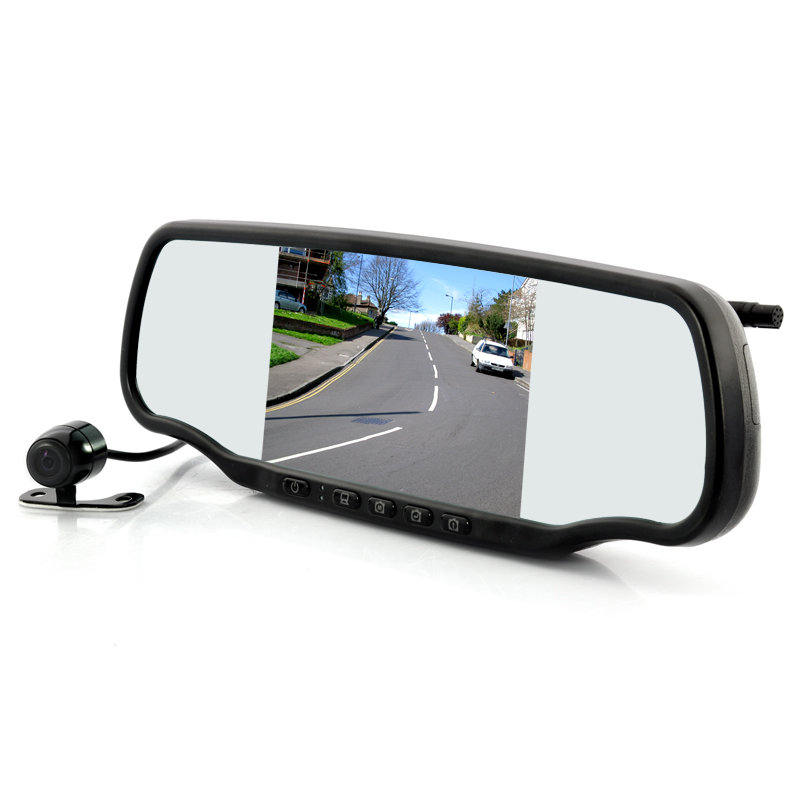Chinavasion Rear View Mirror Device
 Amazon has hundreds of different models of the kind. They come with all sorts of functions, but none of them seems to combine them all. For that, I had to go to Chinavasion, a site that aggregates gadgets made in China and has them drop-shipped to consumers. You can get a volume discount, but there is typically no minimum sale.
Amazon has hundreds of different models of the kind. They come with all sorts of functions, but none of them seems to combine them all. For that, I had to go to Chinavasion, a site that aggregates gadgets made in China and has them drop-shipped to consumers. You can get a volume discount, but there is typically no minimum sale.
Best of all, they allow PayPal, which makes me feel better. I am not too happy about giving a company an ocean away my credit card information (regardless of the ocean), and this way I can monitor more safely what happens.
Aside from an astonishing number of cheap Android gadgets and cell phones, security cameras and solar chargers, and all the panoply of things you can get, there are mirror cams to be found on Chinavasion. Those are like dash cams, but they are built into a rear view mirror that replaces the original one.
Basically, you plug out the old mirror, insert the new one, and voila, you have a dash cam that faithfully records what happens on the road.
Only that this one not only has a dash cam, but a whole array of functions. Primarily, it also has:
- a parking (rear) camera that connects wirelessly
- a radar detector
- a GPS function
- Bluetooth hands-free functionality
- games and a media player
It doesn’t have a shock sensor, which is typically important because you want to protect those files recorded when the car was subjected to a strong shock (think: accident).
The hardware looks pretty good. It is obvious that the device was recently upgraded to a wireless parking camera, because it still has a composite video in (the banana yellow plug on the back of your VCR). The mirror is fairly large, and while the base is hard to screw in (basically a little too small for the mirror), the whole unit has a solid feel. Even the buttons on the device are quite responsive.
The software is a little… odd. First of all, there is no GPS software or data. If you want the function to work, you need to buy the software externally. My sense from reading the manual is that you might download it illegally from some undisclosed location. I have no idea, but I am thankfully not going to use the GPS functionality.
The main reason for that is that the mirror computer runs Windows CE. I have no idea why the manufacturers haven’t long switched over to Android, which is also completely free of charge, and which supports a lot more functionality. But Windows CE it is, from the ugly icons on the screen to the weirdness of an interface that never knows if it’s controlled by keyboard or fingers.
As a result, the software as a whole is a little… screwy. Some of it is simply idiosyncratic and not conforming to Android conventions with no downside, but some is really annoying – like the sheer number of buttons on the home screen, half of whom you’ll never really use.
The worst part of the package, though, is clearly the user manual. The problem is that the language in which it’s written, though clearly meant to be English, is unintelligible. Even when trying to interpret it with an open mind, I failed to find the meaning of some of the words and sentences. I got that “The effect figure below is subject to the material object” means “Figure below is approximate. Refer to the actual unit for details.” But would you know what your car’s “plaque” is? It is “in the car hood on the driver’s side.”
My favorite sentence is as follows: “In this process, it is important to note that the cut don’t fully grasp the situation, don’t make pull the fuse that would make unnecessary trouble.”
The problem with instructions like these is that they try to be economic (i.e. short), but they fail to be clear. You are left connecting wires and hiding them in insulation without a whole lot of help from the manual. At the same time, modern cars (at least in the U.S.) typically have powered rear view mirrors (for some reason someone thought displaying the cardinal direction would be incredibly useful). It would have been much easier to have a connector to the mirror plug on existing cars, instead of having to route everything around.
Aside from that, the unit is a steal. The software is clearly not baked and sometimes frustrating, but for the money, it’s absolutely worth the buy. I just wished they spent a tiny little bit of their R&D on better documentation. Maybe they could give their early customers a discount for helping them with the language?